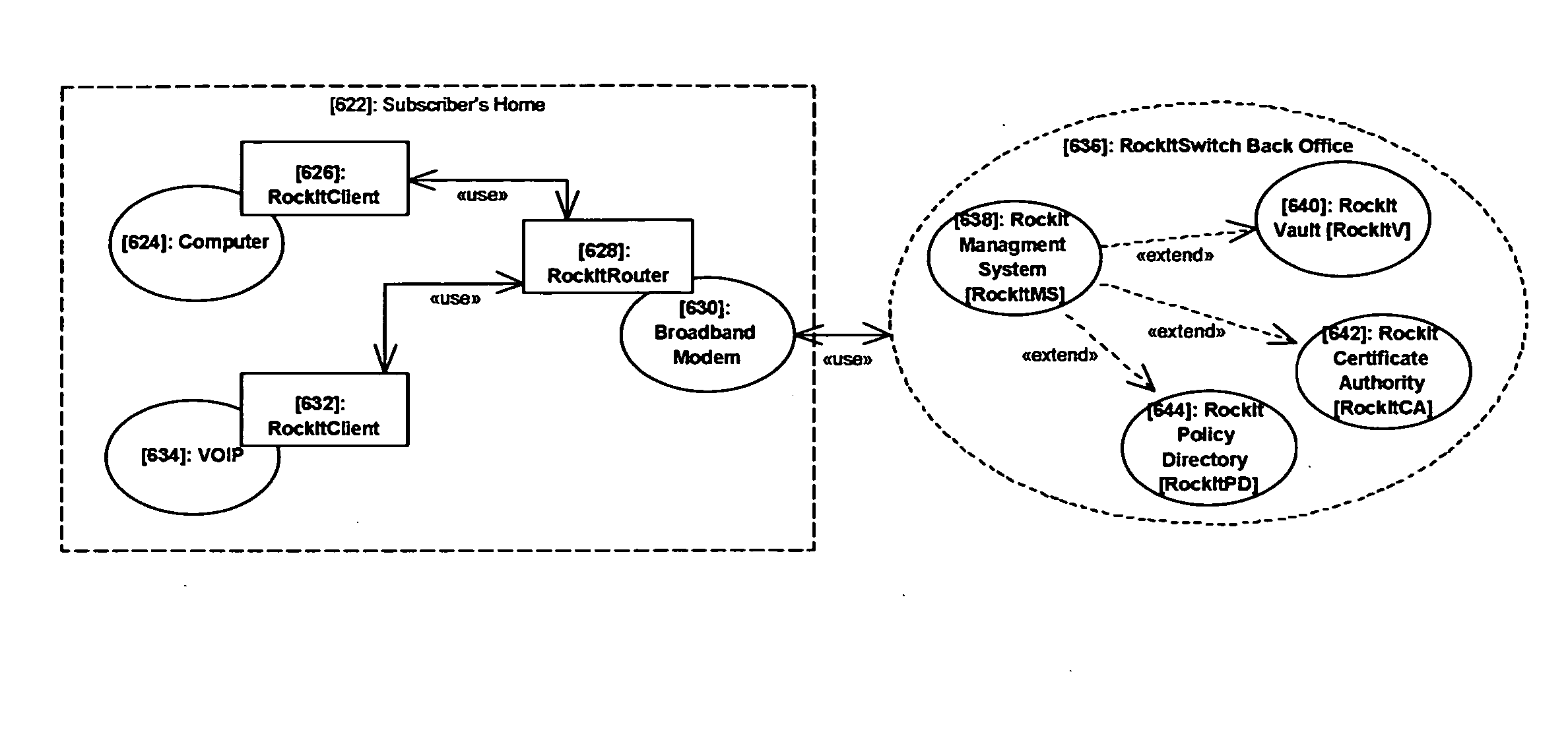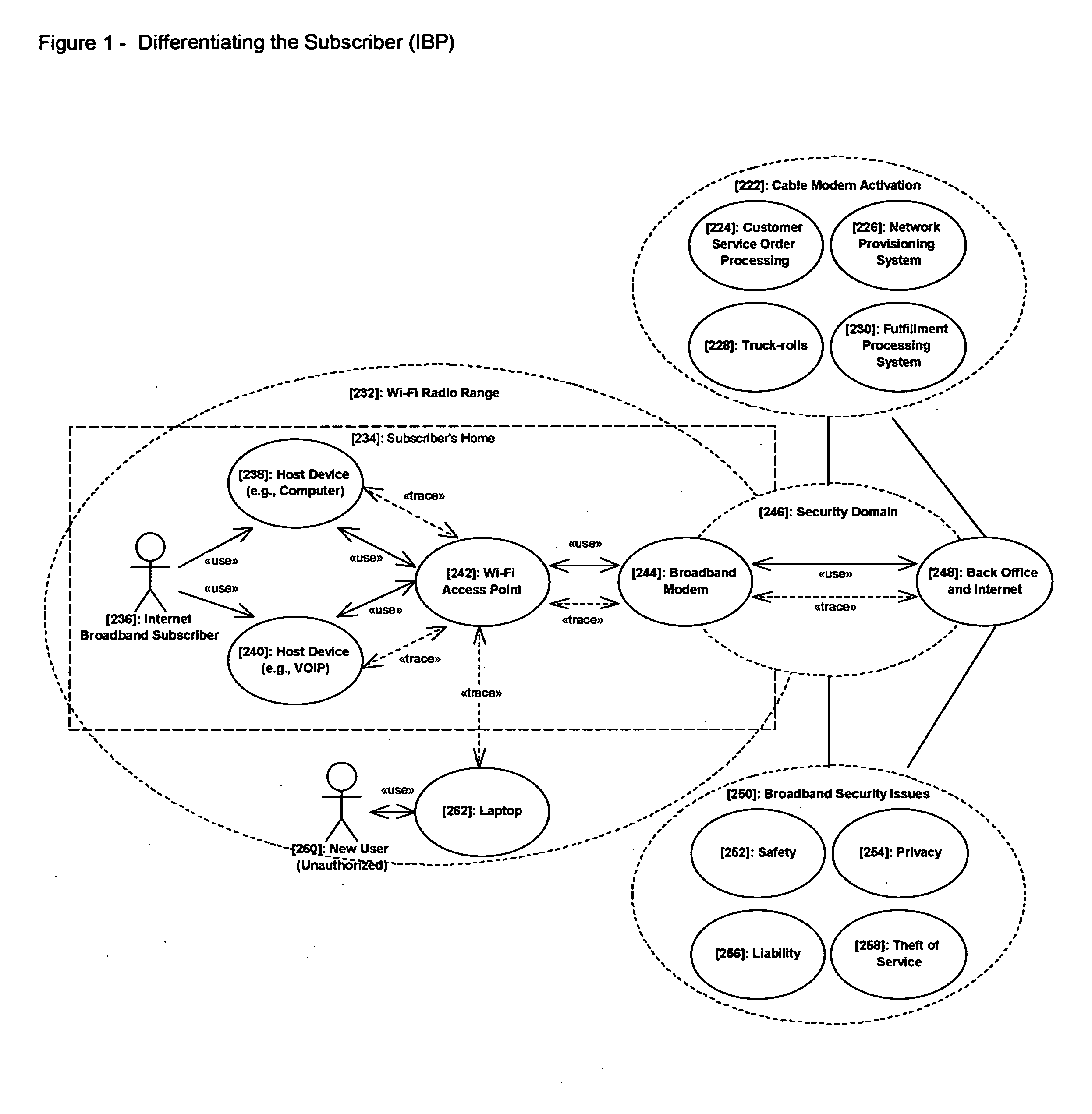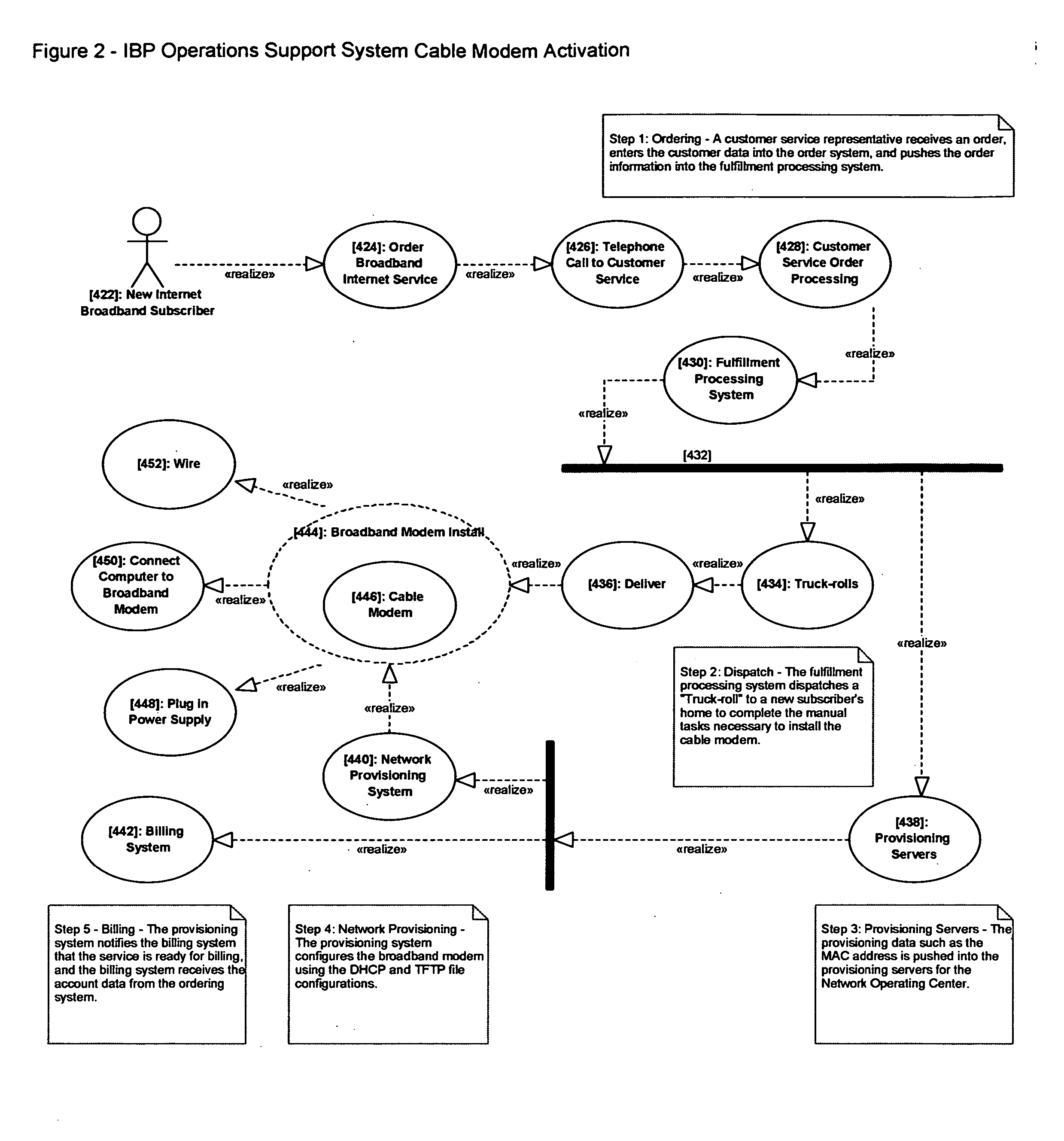Broadband network security and authorization method, system and architecture
a technology of authorization method and broadband network, applied in the field of broadband network security and authorization method, system and architecture, can solve the problems of uncapable bandwidth limits, loss of significant bandwidth market and revenue potential, and industry loss of estimated $6.6 billion in basic and premium revenue annually
- Summary
- Abstract
- Description
- Claims
- Application Information
AI Technical Summary
Problems solved by technology
Method used
Image
Examples
Embodiment Construction
[0064] In the traditional Internet broadband provider's (IBP) view, the customer, or subscriber, broadband modem correlates to the customer account. They do not distinguish host network devices connected to the broadband modem to the customer account. Their business models provide a one-to-one relationship of subscriber to broadband modem for accounting. Subscribers typically circumvent Service Level Agreements (SLA) by creating home networks. These home networks are typically wireless Wi-Fi networks—contributing to security issues such as safety, privacy, liability, and theft of service. Currently, IBP business models, and their systems and processes, manage account activation in an on or off manner. Following traditional utility business models, Internet broadband access is in an “On” state as long as a subscriber's account is current in the provider's accounting systems. As illustrated in the Use Case diagram above (FIG. 2), the Internet broadband provider's security domain is li...
PUM
 Login to View More
Login to View More Abstract
Description
Claims
Application Information
 Login to View More
Login to View More - R&D
- Intellectual Property
- Life Sciences
- Materials
- Tech Scout
- Unparalleled Data Quality
- Higher Quality Content
- 60% Fewer Hallucinations
Browse by: Latest US Patents, China's latest patents, Technical Efficacy Thesaurus, Application Domain, Technology Topic, Popular Technical Reports.
© 2025 PatSnap. All rights reserved.Legal|Privacy policy|Modern Slavery Act Transparency Statement|Sitemap|About US| Contact US: help@patsnap.com



